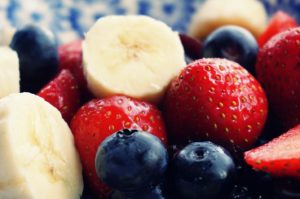
When it comes to eating more produce, you know you just can’t go wrong. Or can you?
Every type of fruit is a good option. In fact, research shows that eating at least four to five servings a day can reduce your risk of heart disease, boost your mood, and do a whole lot of wonders for your wellbeing. Yet most of us are missing out on sufficient potassium, calcium, magnesium, and dietary fiber – all of which are found in fruit. The fiber in fruit even supports better digestion and can fill you up for fewer calories.
But I need to tell you this. Just because you grow the fruit and prepare it yourself doesn’t mean you’re opting for the healthiest options.
Cooked Fruit? Think carefully
Heat destroys nutrients, and the way you cook your fruit can make a big difference. Vitamins B and C along with other phytonutrients in fruits are water-soluble. By boiling your fruit, you risk leaching out those nutrients, especially if you throw away the cooking liquid. But keeping your excess liquid for stocks and other recipes will help you reap the health benefits.
On the other hand, vitamins like A, D, E, and K are all fat-soluble. That means if you cook your fruits in oil, the compounds break down, lessening the health benefits.
Then there’s vitamin C, which is found in a whole list of fruits and is often used as a way of measuring the effect of cooking on nutrients. Vitamin C tends to sensitive to air, light, heat, and is also water-soluble, which means its concentration can degrade easily.
When it comes to preserving vitamin C, raw fruits are the way to go. But time should be considered since most nutrients start degrading straight after harvest. That means that the health benefits could be gone by the time the fruit reaches your plate – an important point to consider if you grow your own.
Fruit for your health
Raw fruit is one of the healthiest things you can eat. In fact, it’s easy to eat, sweet, and has its own natural wrapper, making it the perfect food. It’s also packed with all the right nutrients. In fact, raw is probably one of the best ways to go.
Fruit at dinner time
At dinner time, add grapes, dried cranberries or orange segments to a salad, add crushed pineapple to coleslaw or one of my favorites, a fruit salsa on top of grilled fish.
Fruit at breakfast
Top your cereal with strawberries, peaches or bananas. Alternatively, mix your fruit with low-fat yogurt or add blueberries to your pancakes.
Fruit to your main dishes
If you’re cooking up a hot meal, sprinkle chopped fruit over the top of the dish. It may sound weird, but believe me, it’s divine, especially if served with a green salad.
Make a dip
Make a healthy yogurt-based dip and cut the fruit up into crudities to serve with it.
It’s a Balancing Act
Fruits are naturally low in sodium, fat, and calories. Depending on what you’re making, cooking can actually add salt, sugar, fat, and calories. But healthy fats, like plant-based oils and olive oil, are okay. They’re heart-healthy and help your body to absorb those fat-soluble nutrients I mentioned earlier. But too much salt is definitely not a good thing.
While you don’t need to worry too much about whether it’s healthier to eat your fruits cooked or raw, it is a balancing act. Most of us just need to eat more produce, no matter how it’s prepared. The trick is to enjoy what you’re eating.
Find more healthy habits at marksalinas.com.
Image: Pexels
No user commented in " Fruit the Healthy Way "
Follow-up comment rss or Leave a Trackback